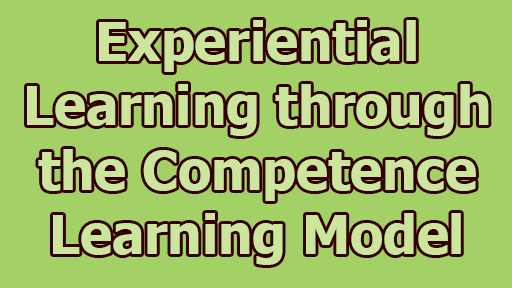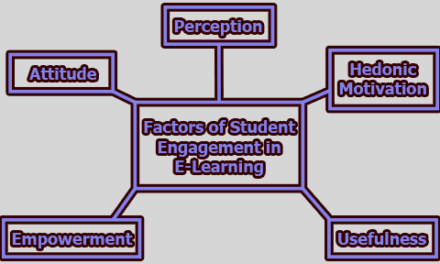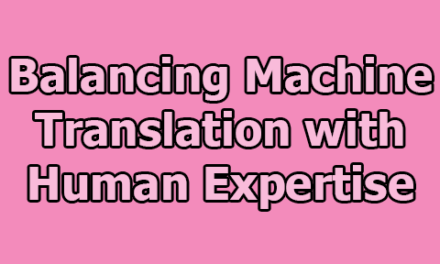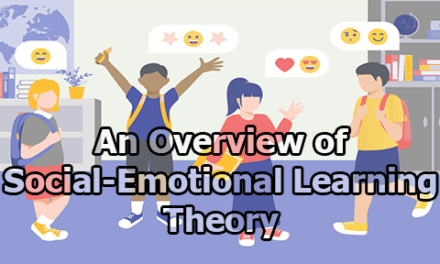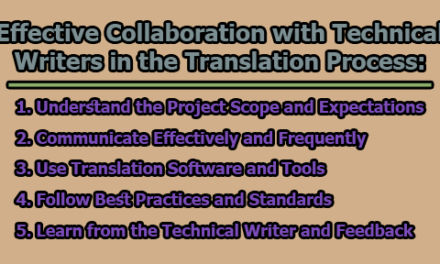Experiential Learning through the Competence Learning Model:
In the ever-evolving landscape of education, the quest for effective teaching and learning methods remains a constant. Traditional pedagogical approaches often leave learners passive, disconnected, and unable to translate theoretical knowledge into practical skills. This is where experiential learning, in conjunction with the Competence Learning Model, emerges as a powerful paradigm shift. Experiential learning, deeply rooted in John Dewey’s educational philosophy, emphasizes learning by doing and reflection. The Competence Learning Model, on the other hand, focuses on the development of competence, integrating practical skills and theoretical knowledge. When combined, these two approaches offer a dynamic and comprehensive educational framework. In this article, we will delve into the power of experiential learning through the Competence Learning Model; explore their origins, key principles, practical implementation, and case studies to provide a holistic understanding of how these concepts can revolutionize learning.
Section 1: Understanding Experiential Learning:
1.1. Historical Roots: Experiential learning, as a pedagogical approach, owes much of its development to the pioneering work of philosopher and educator John Dewey. Dewey’s contributions to education have left an indelible mark, and his advocacy for learning through experience remains influential to this day.
John Dewey, born in 1859, was a prominent figure in American education and philosophy. He believed that education should be a dynamic and interactive process rather than a passive accumulation of facts. Dewey’s educational philosophy centered on the idea that experiences are at the core of meaningful learning.
1.2. Key Principles: Experiential learning is guided by several core principles, which align with cognitive science and modern educational theory:
1.2.1. Active Engagement: Experiential learning places a strong emphasis on active engagement. Learners are encouraged to be active participants in their own education. Instead of passively receiving information, they become involved in the learning process, which, according to Dewey, leads to a deeper and more lasting understanding.
1.2.2. Reflection: Reflection is a cornerstone of experiential learning. Learners are prompted to think critically about their experiences, analyze them, and make connections to existing knowledge. This reflective phase allows them to extract meaning from their experiences and develop a richer understanding.
1.2.3. Feedback: In the context of experiential learning, feedback is a crucial component. Learners receive feedback on their actions and reflections, allowing them to adjust and improve their understanding and performance. Feedback serves as a mechanism for continuous improvement.
1.2.4. Real-World Application: Experiential learning places a strong emphasis on the application of knowledge in real-world contexts. This principle ensures that the knowledge acquired is not limited to the classroom but can be used effectively in practical situations, enhancing its relevance and utility.
1.3. The Role of Reflection: Reflection is a crucial aspect of experiential learning, and it serves as the bridge between experience and understanding. This reflective process fosters metacognition, enabling learners to gain insight into their learning processes, strengths, and areas that require improvement. It allows learners to answer the fundamental question: “What did I learn from this experience, and how can I apply it in the future?”
Reflection is a multi-faceted process, involving self-awareness, critical analysis, and self-regulation. It encourages learners to consider not only what they did but why they did it, how they felt, and what they can do differently in the future.
1.4. Practical Implementation of Experiential Learning: The implementation of experiential learning can vary across different educational settings, from K-12 to higher education. Furthermore, as technology continues to reshape the educational landscape, it plays a significant role in facilitating experiential learning in online environments. Here are various strategies for incorporating experiential learning:
1.4.1. K-12 Education: In K-12 settings, experiential learning can be integrated into the curriculum through activities like field trips, hands-on experiments, and project-based learning. For example, a science class might involve a field trip to a local nature reserve to study ecosystems, providing students with direct experiences that deepen their understanding.
1.4.2. Higher Education: In higher education, experiential learning can be embedded into the curriculum through internships, cooperative education programs, and service-learning opportunities. These real-world experiences complement theoretical knowledge, enhancing students’ readiness for their future careers.
1.4.3. Online Education: The advent of online education has expanded the possibilities for experiential learning. Simulations, virtual labs, and interactive case studies can provide authentic learning experiences in virtual environments. These tools allow learners to apply knowledge and skills in simulated real-world scenarios.
Section 2: Competence Learning Model:
2.1. Origins and Development: The Competence Learning Model represents an innovative educational framework that has its roots in the evolving landscape of education. This section delves into the origins and development of this model, highlighting key figures who have contributed to its evolution.
The Competence Learning Model, often referred to simply as the Competence Model, traces its origins to the work of educational thinkers and practitioners who sought to create a holistic approach to education that emphasizes the development of practical skills alongside theoretical knowledge. While the model has been continually refined and adapted over the years, several key figures have played pivotal roles in its development.
One of the earliest proponents of competence-based education was David McClelland, an American psychologist known for his work on competency theory. McClelland’s research focused on the identification and assessment of competencies relevant to various professions. His work laid the foundation for the integration of practical competencies into education.
In addition to McClelland, Benjamin Bloom’s taxonomy of educational objectives contributed to the conceptual framework of the Competence Model. Bloom’s taxonomy provided a structure for understanding and categorizing different types of learning objectives, including cognitive, affective, and psychomotor domains. This taxonomy has been instrumental in shaping the Competence Learning Model’s approach to learning domains.
The Competence Learning Model’s development has been ongoing, adapting to the changing needs of education and the demands of the workforce. It has gained prominence in vocational and professional training, where the acquisition of practical skills is essential.
2.2. Core Principles: The Competence Learning Model is guided by several core principles that underpin its effectiveness in developing well-rounded, competent individuals. These principles include:
2.2.1. Integration of Theoretical and Practical Knowledge: At the heart of the Competence Model is the integration of theoretical and practical knowledge. This principle recognizes that learning should not be confined to the classroom but should extend to real-world applications. It emphasizes that knowledge is most valuable when it can be effectively applied in practical settings.
2.2.2. Learning Outcomes: The model places a strong emphasis on clearly defined learning outcomes. Learners are provided with explicit goals and objectives, which guide their educational journey. These outcomes are often linked to specific competencies that learners are expected to acquire.
2.2.3. Continuous Improvement: The Competence Learning Model promotes the idea of continuous improvement. Learning is viewed as an ongoing process, and feedback is a vital component of this principle. Learners receive regular feedback on their progress, allowing them to make necessary adjustments and enhancements in their competence development.
2.3. Learning Domains: The Competence Learning Model recognizes the multifaceted nature of competence and addresses various learning domains. These domains include cognitive, affective, and psychomotor domains, each playing a vital role in the development of competence.
2.3.1. Cognitive Domain: The cognitive domain focuses on the development of intellectual skills and knowledge. This includes critical thinking, problem-solving, and the acquisition of theoretical knowledge. In the Competence Model, cognitive competence is seen as the foundation upon which other competencies are built.
2.3.2. Affective Domain: The affective domain deals with emotions, values, and attitudes. It emphasizes the development of interpersonal skills, ethical behavior, and emotional intelligence. This domain is particularly relevant in professions that require strong interpersonal and ethical competencies.
2.3.3. Psychomotor Domain: The psychomotor domain relates to the development of physical and motor skills. It includes competencies such as dexterity, coordination, and manual skills. This domain is crucial in fields like healthcare, engineering, and the arts.
2.4. Assessment and Feedback: The Competence Learning Model places a strong emphasis on comprehensive assessment techniques to evaluate learners’ progress. Assessment methods are designed to align with the defined learning outcomes and competencies, ensuring that learners are on track to meet their educational goals.
Feedback loops play a central role in the Competence Model’s approach to assessment. Learners receive feedback on their performance, which can be formative or summative, depending on the stage of their competence development. Formative feedback provides guidance for improvement, while summative feedback assesses overall competence.
The feedback process is iterative and ongoing, allowing learners to make adjustments and enhancements as they work towards the development of competence. This approach not only helps learners track their progress but also ensures that they are well-prepared for real-world applications.
So, the Competence Learning Model, with its roots in competency theory and influential figures like David McClelland and Benjamin Bloom, offers a holistic approach to education. It integrates theoretical and practical knowledge, emphasizes learning outcomes, and addresses cognitive, affective, and psychomotor domains. Through comprehensive assessment and feedback, it ensures that learners develop competence in their chosen fields.
Section 3: Synergy between Experiential Learning and the Competence Learning Model:
3.1. How They Complement Each Other: Experiential learning and the Competence Learning Model are two educational approaches that inherently complement each other, creating a powerful synergy. This section explores the natural compatibility between these two models and how the Competence Learning Model provides a structured framework to facilitate experiential learning experiences.
3.1.1. Integration of Theoretical and Practical Knowledge: Experiential learning emphasizes the application of knowledge in real-world contexts. This aligns seamlessly with the Competence Learning Model’s core principle of integrating theoretical and practical knowledge. Learners engaged in experiential learning are not merely acquiring theoretical concepts but actively applying them, which is a fundamental aspect of competence development.
3.1.2. Learning Outcomes and Clear Objectives: The Competence Learning Model places a strong emphasis on clearly defined learning outcomes and objectives. Experiential learning benefits from this focus by providing specific goals and expectations for learners. When learners engage in real-world experiences, they understand the relevance of their actions to achieving these objectives, fostering a sense of purpose and direction.
3.1.3. Active Engagement and Reflection: Experiential learning’s core principles of active engagement and reflection align with the Competence Model’s emphasis on continuous improvement. Through active engagement, learners acquire practical skills and theoretical knowledge. The reflection phase allows them to critically analyze their experiences, make connections to their existing knowledge, and identify areas for improvement.
3.1.4. Real-World Application: The practical application of knowledge is at the heart of both experiential learning and the Competence Learning Model. Experiential learning activities often involve real-world scenarios, allowing learners to practice and refine their skills in authentic settings. The Competence Model’s focus on practical competence development reinforces the significance of this real-world application.
3.1.5. Assessment and Feedback: The Competence Learning Model’s approach to assessment and feedback provides a structured mechanism for evaluating learners’ progress. Experiential learning activities offer ample opportunities for assessment. By aligning the assessment with defined competencies and learning outcomes, educators can provide meaningful feedback, fostering continuous improvement and competence development.
3.2. The Learning Cycle: Experiential learning follows a well-defined learning cycle that aligns with the principles of the Competence Learning Model. This cycle consists of four key stages: experiencing, reflecting, conceptualizing, and applying. Let’s explore how each stage of the learning cycle contributes to the development of competence within the Competence Learning Model:
3.2.1. Experiencing: The first stage of the learning cycle involves direct experiences where learners engage in practical activities. These experiences form the foundation for competence development. In the Competence Learning Model, this corresponds to the acquisition of practical knowledge and skills.
3.2.2. Reflecting: Reflection is a pivotal stage in both experiential learning and the Competence Model. During this phase, learners analyze their experiences, identify challenges, and gain insight into their learning processes. In the Competence Model, this reflective process aligns with the assessment and feedback loop, providing opportunities for self-assessment and receiving feedback on performance.
3.2.3. Conceptualizing: In the conceptualizing stage, learners draw connections between their experiences and existing theoretical knowledge. This aligns with the Competence Learning Model’s principle of integrating theoretical and practical knowledge. Learners gain a deeper understanding of the conceptual frameworks underpinning their actions.
3.2.4. Applying: The final stage of the learning cycle involves applying the knowledge and insights gained from the previous stages. This stage directly supports the Competence Model’s emphasis on real-world application. Learners apply their competence in practical scenarios, reinforcing their skills and solidifying their understanding.
In this way, the learning cycle in experiential learning not only complements but enhances the Competence Learning Model by providing a structured framework for the development of practical skills, knowledge integration, and continuous improvement.
The synergy between experiential learning and the Competence Learning Model offers a comprehensive and effective approach to education. By combining the principles of experiential learning with the structured framework of competence development, learners can acquire both practical skills and theoretical knowledge while continuously improving their competence.
Section 4: Case Studies:
4.1. Experiential Learning in STEM Education: Experiential learning combined with the Competence Learning Model has transformed STEM (Science, Technology, Engineering, and Mathematics) education. It provides students with real-world experiences that align with theoretical knowledge, fostering competence and innovation. Let’s explore some successful programs and initiatives:
4.1.1. Project-Based Learning in Engineering: In a university engineering program, students engage in project-based learning where they work on real engineering projects. These projects involve designing, building, and testing solutions to real-world problems. The Competence Learning Model guides the integration of theoretical engineering concepts with practical application, leading to the development of critical thinking and problem-solving skills. Students not only understand theory but also gain competence in applying it to complex, real-world engineering challenges.
4.1.2. STEM Internships for High School Students: High schools have introduced STEM internships as part of their curricula. Students are placed in local companies, research labs, or government agencies. These internships align with the Competence Learning Model by focusing on clear learning outcomes related to specific competencies. Students engage in hands-on learning, working on projects that require the application of STEM knowledge. This approach prepares them for STEM careers, ensuring they have practical skills and a solid theoretical foundation.
4.2. Competence Learning in Healthcare Education: Healthcare education has adopted the Competence Learning Model to ensure future healthcare professionals are well-prepared with practical skills alongside theoretical knowledge. Experiential learning plays a vital role in healthcare education by providing hands-on experiences. Here’s an exploration of this synergy:
4.2.1. Nursing Simulation Labs: In nursing education, simulation labs are widely used to provide experiential learning. These labs simulate clinical scenarios where students can practice skills like patient assessment, administering medications, and handling emergencies. The Competence Learning Model ensures that learning outcomes are aligned with the specific competencies expected of nurses. Students receive feedback on their performance, fostering continuous improvement and competence development. The integration of theory and practice is crucial in healthcare, and this approach ensures students are ready for real clinical settings.
4.2.2. Medical School Competency-Based Education: Medical schools have shifted towards competency-based education (CBE), which is closely aligned with the Competence Learning Model. CBE focuses on clear learning outcomes and assesses students based on their competence in medical skills and knowledge. Experiential learning is central to CBE, and medical students are required to complete clinical rotations where they apply theoretical knowledge in real patient care settings. The Competence Learning Model ensures that students are assessed comprehensively, and feedback is used for continuous improvement, making them competent healthcare professionals.
4.3. Business and Entrepreneurship Education: Experiential learning and the Competence Learning Model play a pivotal role in preparing students for the dynamic world of business and entrepreneurship. Here are case studies illustrating their impact:
4.3.1. Business Incubators: Many universities have established business incubators that provide a supportive environment for student entrepreneurs. These incubators align with the Competence Learning Model by defining clear learning outcomes related to entrepreneurship skills. Students engage in real entrepreneurial ventures, working on business plans, seeking funding, and running their own companies. The practical application of business concepts and the integration of theory with practice prepare them for success in the competitive business world.
4.3.2. Case-Based Learning in MBA Programs: In MBA programs, case-based learning is a common practice. Business cases reflect real-world challenges that companies face. Students analyze these cases, develop solutions, and present their recommendations. The Competence Learning Model ensures that the learning outcomes include competencies related to strategic thinking, decision-making, and effective communication. Experiential learning through case analysis allows students to apply theoretical business concepts and develop competence in solving complex business problems.
These case studies highlight the transformative potential of combining experiential learning and the Competence Learning Model in STEM, healthcare, and business education. It ensures that students not only acquire theoretical knowledge but also develop the practical competence required for success in their chosen fields.
Section 5: Challenges and Future Directions:
5.1. Common Challenges: Implementing experiential learning within the framework of the Competence Learning Model comes with several challenges that educators often encounter. Let’s delve into some common challenges:
5.1.1. Resource Constraints: One of the primary challenges is resource constraints. Providing experiential learning experiences often requires additional resources, such as specialized equipment, facilities, or funding for field trips and internships. Many educational institutions face budget limitations, making it difficult to provide these resources for all students.
5.1.2. Assessment Difficulties: Assessing competence, particularly in fields that demand practical skills, can be challenging. Traditional assessment methods may not effectively evaluate real-world competence. Developing and implementing comprehensive, valid, and reliable assessment strategies that align with the Competence Learning Model can be time-consuming and resource-intensive.
5.1.3. Resistance to Change: Educational institutions and instructors may resist the shift toward experiential learning and the Competence Model due to the need for significant pedagogical changes. Some may be hesitant to move away from traditional lecture-based teaching methods, leading to resistance and reluctance to adapt to new approaches.
5.1.4. Overcoming Siloed Disciplines: Experiential learning often requires interdisciplinary collaboration. In some educational settings, disciplines are traditionally siloed, making it challenging to create interdisciplinary experiential learning opportunities. Bridging these disciplinary divides is a considerable obstacle.
5.2. Future Directions: As education evolves, there are promising future directions that can enhance experiential learning within the Competence Learning Model. These directions leverage emerging trends and technologies to overcome existing challenges and improve the learning experience:
5.2.1. Adaptive Learning Platforms: Adaptive learning platforms are gaining momentum in education. These platforms use data analytics and artificial intelligence to personalize the learning experience for each student. By adapting content and assessment based on individual progress and needs, these platforms can enhance the effectiveness of experiential learning, ensuring that students receive tailored guidance and support.
5.2.2. Virtual Reality (VR) and Augmented Reality (AR): VR and AR technologies have the potential to revolutionize experiential learning. These immersive technologies can simulate real-world scenarios, allowing students to practice skills in safe and controlled environments. In healthcare education, for example, VR can be used for medical simulations. In STEM fields, AR can enable students to interact with virtual experiments. These technologies can bridge resource constraints and enhance the practical aspects of competence development.
5.2.3. Online and Blended Learning: The digital transformation of education continues to expand the possibilities for experiential learning. Online and blended learning environments can incorporate simulations, virtual labs, and interactive case studies to provide authentic learning experiences. These approaches are particularly valuable in overcoming resource constraints and making experiential learning more accessible.
5.2.4. Competency-Based Education (CBE) Models: Competency-based education (CBE) models, which align closely with the Competence Learning Model, are expected to grow in popularity. CBE focuses on clear, measurable learning outcomes and provides flexibility for students to progress at their own pace. It supports the development of competence by ensuring that learners achieve specific competencies, aligning well with the goals of experiential learning.
While challenges exist in implementing experiential learning within the Competence Learning Model, the future of education looks promising. Emerging technologies, adaptive learning platforms, and new pedagogical approaches will play pivotal roles in enhancing the effectiveness of experiential learning and ensuring students develop the competence they need for success in their chosen fields.
Section 6: The Transformative Potential:
6.1. Impact on Learners: The integration of experiential learning within the Competence Learning Model has a profound transformative potential for learners. It goes beyond traditional education, offering unique benefits in terms of learner engagement, skill development, critical thinking, and fostering a culture of lifelong learning. Let’s explore the impact through testimonials and anecdotes from students who have benefited from this approach:
6.1.1. Enhanced Learner Engagement: Experiential learning actively involves students in their own education, capturing their attention and fostering a sense of ownership over their learning journey. Emily, a college student, shares her experience, “Experiential learning made me an active participant in my education. I wasn’t just sitting in lectures; I was out in the field, working on real projects. It made me excited to learn and eager to explore more.”
6.1.2. Skill Development: Experiential learning, guided by the Competence Learning Model, places a strong emphasis on developing practical skills. John, a high school student involved in a STEM program, reflects, “Experiential learning taught me more than textbooks ever could. I built robots, conducted experiments, and truly understood the concepts. It wasn’t about memorization; it was about hands-on learning.”
6.1.3. Critical Thinking: The reflective component of experiential learning nurtures critical thinking. Sarah, a nursing student, describes her experience, “Through clinical rotations and simulations, I learned to think critically in real healthcare situations. Experiential learning wasn’t just about checking off tasks; it was about understanding the ‘why’ behind every action.”
6.1.4. Lifelong Learning: Experiential learning experiences often spark a lifelong love of learning. Mike, a business student who participated in a real-world entrepreneurship project, shares, “My journey through experiential learning showed me that learning doesn’t end with graduation. It’s a lifelong process. I still apply the skills I gained to my career, always seeking new opportunities to grow.”
6.2. Impact on Educational Institutions: Embracing experiential learning through the Competence Learning Model has the potential to transform educational institutions into learner-centric and adaptive entities. This shift impacts not only the students but the entire educational paradigm:
6.2.1. Learner-Centric Institutions: Institutions that embrace experiential learning prioritize the needs and interests of their students. The focus shifts from delivering content to creating meaningful learning experiences. Faculty and staff work collaboratively to design programs that ensure students develop practical competence alongside theoretical knowledge.
6.2.2. Adaptive Education: Educational institutions that incorporate the Competence Learning Model adapt to the changing needs of students and the job market. They continually update curricula to ensure that graduates are well-prepared for real-world challenges. This adaptability makes these institutions more relevant in a dynamic world.
6.2.3. Collaboration and Innovation: Experiential learning fosters collaboration between educational institutions and external stakeholders, including businesses, healthcare facilities, and community organizations. This collaboration can lead to innovative programs, research opportunities, and mutually beneficial relationships, enhancing the institution’s impact and reach.
6.2.4. Measurable Outcomes: Institutions embracing the Competence Learning Model emphasize clear, measurable learning outcomes and competencies. This approach enables them to assess and improve the effectiveness of their programs. It also ensures that graduates possess the practical skills required by employers.
The transformative potential of experiential learning within the Competence Learning Model is evident in the profound impact on learners and educational institutions. It fosters engagement, skill development, critical thinking, and a culture of lifelong learning among students. At the institutional level, it leads to learner-centric and adaptive educational paradigms, better-preparing graduates for success in their chosen fields.
In conclusion, in this comprehensive exploration of experiential learning through the Competence Learning Model, we have seen how these concepts can revolutionize education. By focusing on active engagement, real-world application, and the development of competence, we can create a more dynamic and effective learning environment. As we move forward in the ever-evolving landscape of education, these approaches offer a pathway to bridge the gap between theory and practice, ultimately preparing learners for success in their chosen fields and in life. The transformative potential of experiential learning and the Competence Learning Model cannot be underestimated, and it is up to educators, institutions, and policymakers to embrace these methods and make education more meaningful and impactful for all.
References:
- Anderson, T., Rourke, L., Garrison, D. R., & Archer, W. (2001). Assessing teaching presence in a computer conferencing context. Journal of Asynchronous Learning Networks, 5(2), 1-17.
- Bloom, B. S. (1956). Taxonomy of Educational Objectives, Handbook I: The Cognitive Domain. David McKay Co Inc.
- Boud, D., Keogh, R., & Walker, D. (1985). Promoting reflection in learning: A model. Routledge.
- Dewey, J. (1938). Experience and Education. The Macmillan Company.
- Hattie, J., & Timperley, H. (2007). The power of feedback. Review of Educational Research, 77(1), 81-112.
- Kolb, D. A. (1984). Experiential learning: Experience as the source of learning and development. Prentice-Hall.
- Kolb, D. A., & Kolb, A. Y. (2005). Learning styles and learning spaces: Enhancing experiential learning in higher education. Academy of Management Learning & Education, 4(2), 193-212.
- Krajcik, J., McNeill, K. L., & Reiser, B. J. (2008). Learning-goals-driven design model: Developing curriculum materials that align with national standards and incorporate project-based pedagogy. Science Education, 92(1), 1-32.
- Schön, D. A. (1983). The reflective practitioner: How professionals think in action. Basic books.
- Wurdinger, S., & Carlson, J. A. (2010). Teaching for experiential learning: Five approaches that work. Rowman & Littlefield.

Library Lecturer at Nurul Amin Degree College

